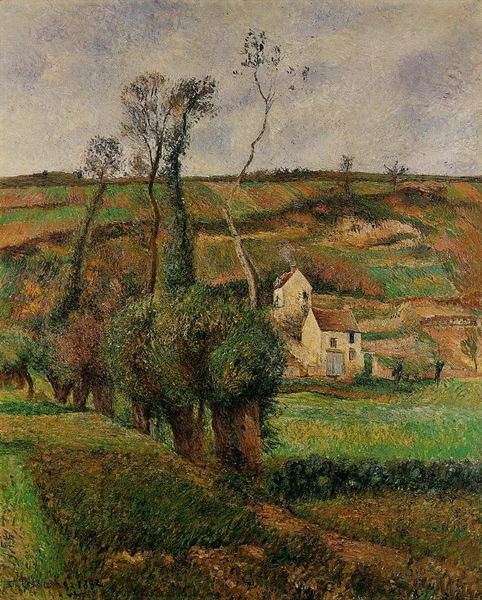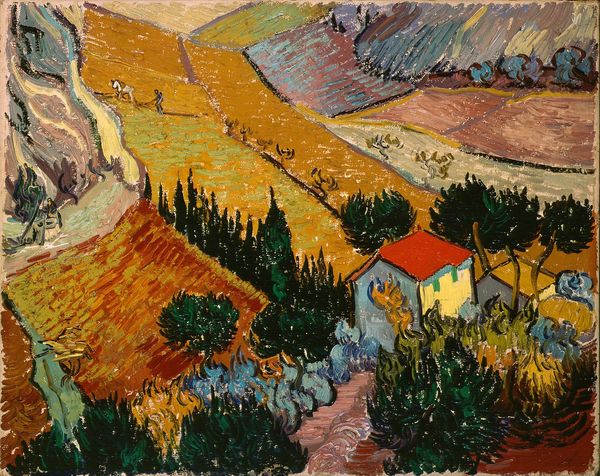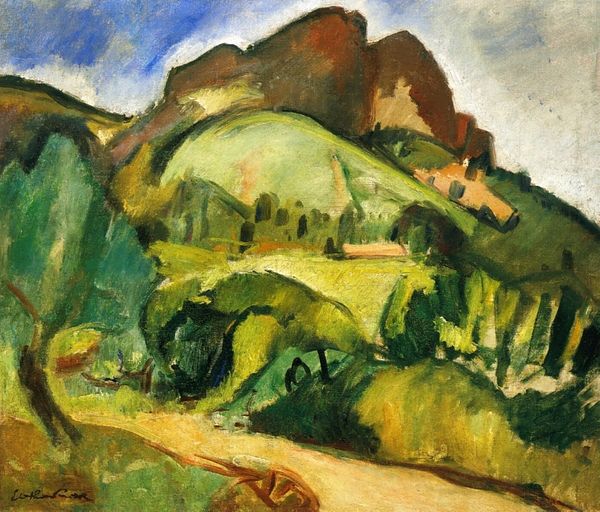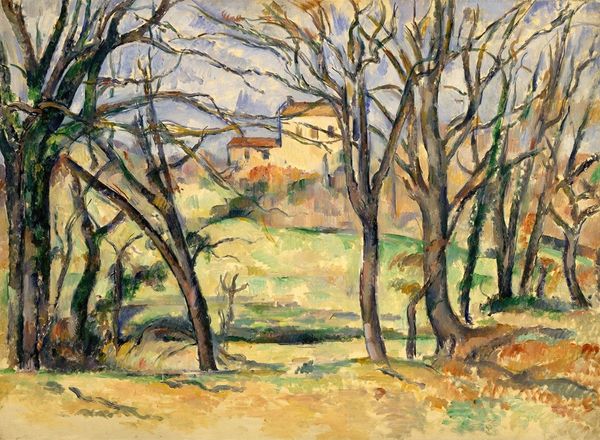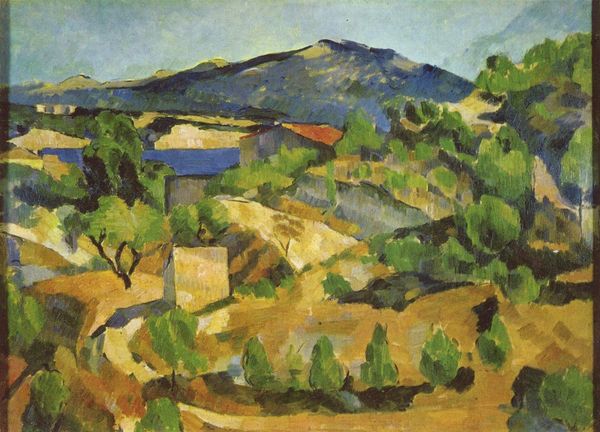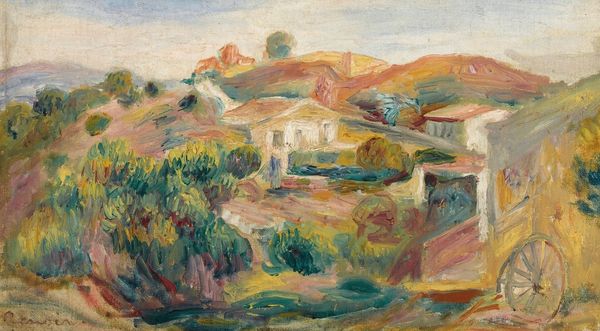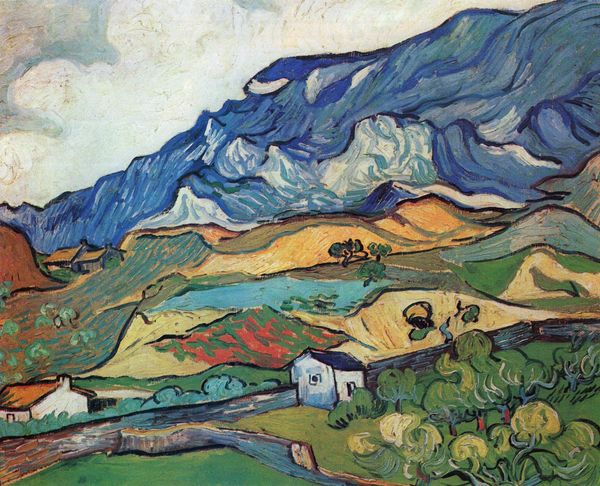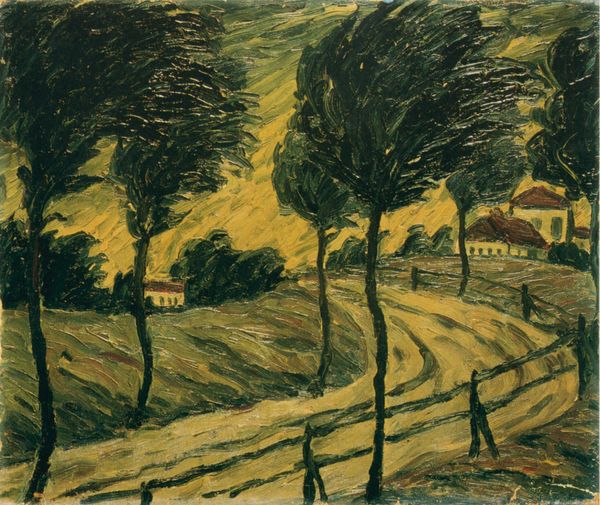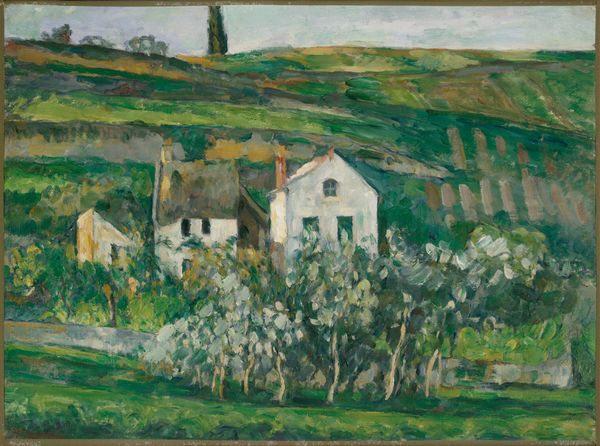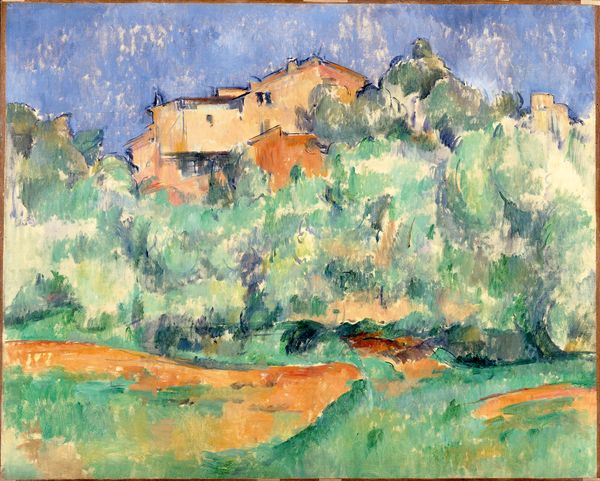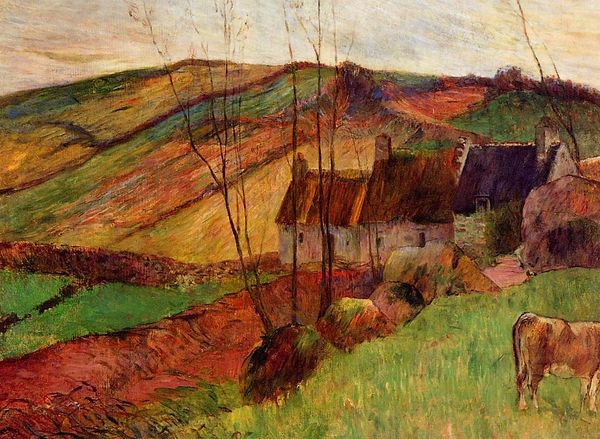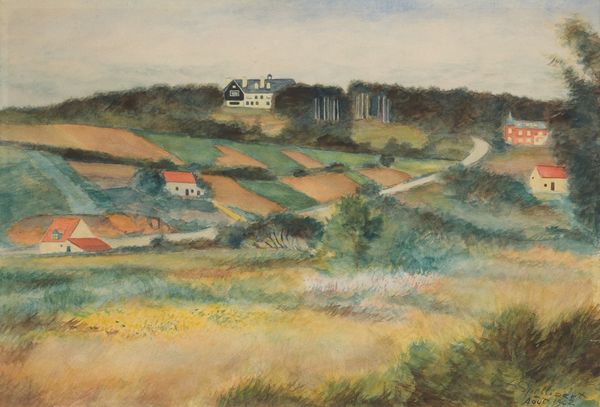
plein-air, oil-paint
#
plein-air
#
oil-paint
#
landscape
#
form
#
oil painting
#
post-impressionism
#
realism
Dimensions: 60 x 73 cm
Copyright: Public domain
Editor: This is Paul Cézanne's "Gardanne," painted around 1890 using oil paints. There's a remarkable emphasis on the shapes in this landscape, it’s almost like he’s building it with blocks of color. What strikes you most about this painting? Curator: It’s fascinating how Cézanne disrupts conventional perspective here. Notice how the composition employs what one might term a multi-perspectival approach, juxtaposing various viewpoints to convey a more holistic understanding of space. Observe how colour is modulated to delineate form, effectively flattening the pictorial plane. Do you see how the planes are organized? Editor: Yes, I see what you mean! It’s not just about mimicking reality, is it? More like building it from basic visual components. The colours also help create these shapes; the patches of greens and browns especially! Curator: Precisely. Consider the employment of color, not merely as a decorative element, but as a structural device. Color, in this context, serves to define the underlying architecture of the composition. In his letters, Cézanne refers to this approach as akin to modulation, where he treats each colour as a unit of energy that structures his space. What effect do you think it creates? Editor: It feels like he’s searching for something more permanent than a fleeting impression. It seems less like impressionism, more interested in form, a desire to solidify his experience, like the landscape is just made of colours. It is such a clever concept! Curator: An excellent observation. This work is a powerful demonstration of his break from impressionistic modes. It signifies his rigorous investigation of the intrinsic visual properties and the construction of an artwork, marking a significant departure into the realm of Post-Impressionism. Editor: This conversation helped me understand Cézanne's aims to emphasize pure form rather than focusing on representing only the visual impressions, which helps understand why his art feels so modern even today.
Comments
No comments
Be the first to comment and join the conversation on the ultimate creative platform.


